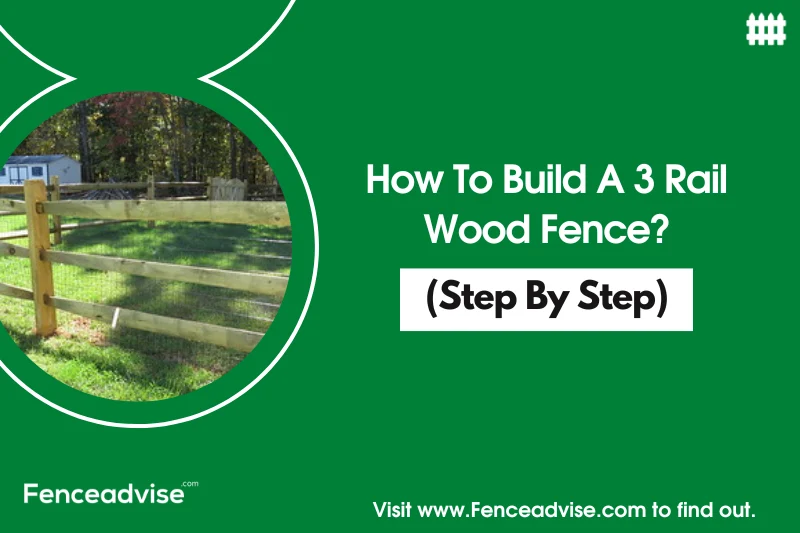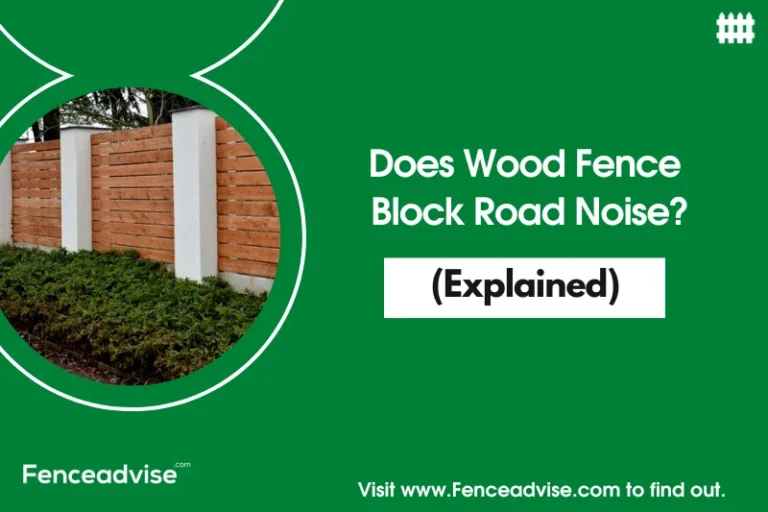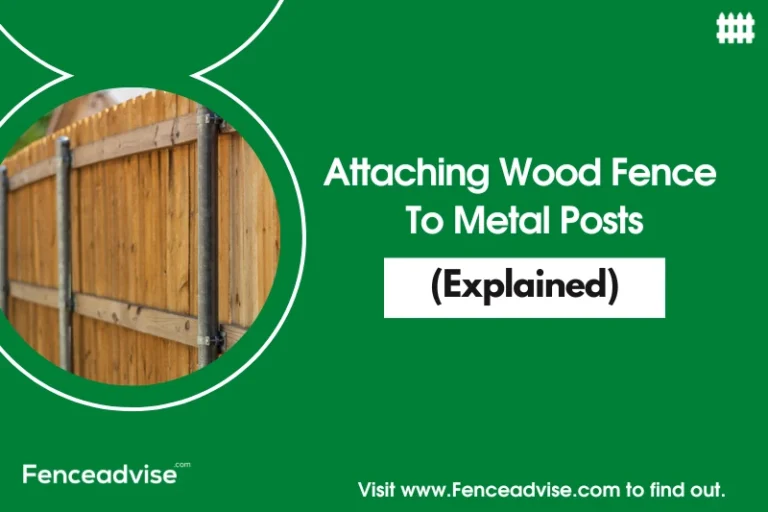We include products we think are useful for our readers. If you buy through links on this page, we may earn a small commission. Read our affiliate disclaimer here.
Rail wood fences are a beautiful addition and investment for those looking to add some rustic charm to their country house or for those who want to keep livestock in their grazing pastures.
Compared to privacy wood fences, a rail wood fence’s primary purpose is to keep large animals corralled and still allow their owners to check on them from time to time.
If you’re looking to add some rustic charm to that farm or country manor, look no further than this article where we detail the costs, and materials, and guide you through building a 3-rail wood fence.
Talk to a Fence Contractor Near You
3 Rail Wooden Fence Spacing
There should be a distance of 8 feet between two adjacent fence posts. Starting from the midpoint of the post, measure 8 ft until you reach the adjacent post’s midpoint. For the railings on a 6ft tall 3 rail wooden fence, the spacing should be 11 inches with the lowest railing being at least 6 inches above the ground.
3 Rail Wood Fence Cost
Building a 3-rail wood fence is cheaper than building a privacy wood fence, based on price per linear foot because less wood and material are needed to complete a 3-rail fence.
A 3-rail wooden fence will only cost $4-$12 per linear foot. An estimated total cost for all the materials needed will be around $400-$1200 for a 100 feet long 3-rail wooden fence and the exact costs for the wood will depend on the wood species used such as Cedar, Pine, or Oak.
This also does not include all the paints or stains you will be using for the finishing touch, and for the required permits that your area’s law might require.
3 Rail Wood Fence Materials
A 6-foot tall 3-rail wood fence is easier to build compared to a privacy wood fence of the same height, but the materials needed are very similar.
Posts: We recommend using pressure treated 4×4” lumber for the fence posts. Pressure treated for longer-lasting protection against wood rot,
The length of the wood will depend on how far the posts are to be submerged underground. For an 8-foot-long fence post, 2 feet can be underground to achieve 6 feet, the higher the proportion of the lumber that is underground, the stronger the foundation will be but do not submerge more than ½ the length of the post.
Railings: Just like for the fence posts, it is better to use pressure-treated fence or corral boards. A size of 1×6” by 16 feet is commonly used and will span the length of 3 fence posts.
The dimensions provide sufficient width to prevent large livestock from jumping through the space between the fence railings.
Find the right fence contractor for your project
Besides the wood, to build a 3-rail fence you will need:
- 3.5-inch Deck Screws to screw in the wood and hold together the fence.
- Any string-like material to trace the perimeter of the fence.
- Cement mix to strengthen the foundation of the fence.
- Cordless Drill/Driver or Nail Gun to drive in screws and nails.
- Wood or Power Saw in case some modifications on the wood’s dimensions needs to be done
- Wooden Stakes to mark the position of the fence posts.
Quick Resource List
- 3.5-inch Deck Screw- Check Price
- Cement Mix- Check Price
- Cordless Drill- Check Price
- Power Saw- Check Price
- 4×4” Fence Post- Check Price
- Digging Pole- Check Price
- Corral Board- Check Price
- Barn and Fence Paint- Check Price
Building A 3 Rail Wood Fence (Step By Step)
Setting Up the Posts
Before setting up the posts, line the perimeter of your future fence with string to guide you later on when placing the posts.
- Mark the spots where the posts will be erected. Use wooden stakes or any marker. There should be a space ½ the width of the wood used between the string and the marker because we are recommending 4x4s, an allowance of 2 inches should be made.
- Because we are using a 4 x 4” by 8-foot wooden post, dig a hole that is 24” deep and 12 inches in diameter. The post has to be submerged between ⅓ to ½ of its total height and with a diameter 3 times the width of the post.
- Fill the hole with cement mix until you reach the 6 inches mark.
- After placing the board, add more cement until it fills just below 3-4” away from the top of the hole. Remember to wiggle the board to remove any air gaps.
- Pour half a gallon of water into the hole full of cement and wait for the cement to solidify.
The added cement is needed to prolong the life of the fence by strengthening its grip on the foundation so it is not easily toppled over.
Attach the Fence Boards
Compared to privacy fence pickets, 3 rail wooden fences only need 3 boards to span the length of 3 fence posts making it easier and cheaper to complete the project. For how to place the railings:
- Place the lowest railing at least 6 inches above the ground and screw it on using the drill and the 3.5-inch deck screws.
- Drill in the next railing at least 11 inches above the upper edge of the previous railing.
- Finally, drill in the upper railing at least 11 inches above the second railing’s edge.
Finishing Options
After you’re done building the fence, you can finish the project by using paints, wood sealers, or wood stains. Each has its own advantages, but it is more common to just use a sealer + stain combo to add moisture protection and add long-lasting color to the fences.
It will also cover up any imperfections if solid wood stains were used, or highlight delicate features if a clear or semi-transparent wood stain was applied.
Get Matched with Local Fence Professionals
Answer a few questions and we’ll put you in touch with pros near you.
Final Thoughts
Building this kind of fence is remarkably easy compared to other fence-building projects, especially if the fence spans only a short perimeter.
For those on the farm, it isn’t hard to see why this is the preferred option to corral your herd, as opposed to using spiked wires that can hurt the livestock.
The durability, simplicity, and easy-to-maintain nature of the 3 rail wooden fence is no doubt the best option for those who want to increase the property value of their country manor or for those who want to start a farm.
At FenceAdvise, we pride ourselves on being the most reliable and trustworthy source of fencing information. Our articles are based on only the highest quality sources, including peer-reviewed studies, to ensure that our readers always have access to accurate information. Read more about our Editorial Guidelines, About Us.








